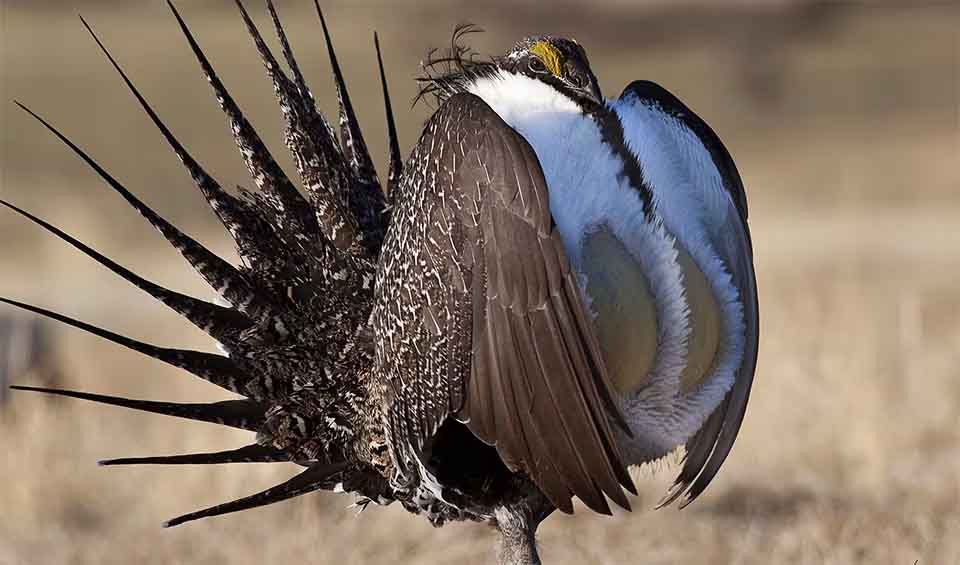Centrocercus – Sage-grouse
Males puff up their chests, fan out their tails, and make funny noises to impress the ladies
This genus refers to a group of birds known as sage-grouse, which are large, ground-dwelling birds native to the sagebrush steppe of the western United States and Canada. Sage-grouse are among the larger members of the grouse family, with males significantly larger than females. They exhibit a mottled brown, black, white, and grey plumage that mimics the sagebrush landscape they inhabit, providing excellent camouflage. One of the most distinctive physical features of the sage-grouse is their large, rounded tails and the white ruff around their necks, which becomes more pronounced in males during the mating season.
The mating ritual of sage-grouse is particularly fascinating and is a major draw for both wildlife enthusiasts and researchers. In the early spring, males gather in communal areas known as leks, where they perform elaborate dances to attract females. These dances include puffing up their chests, fanning their tail feathers, and making a series of popping and swishing sounds with air sacs in their chests. This display not only showcases the vigor of the males but also plays a crucial role in the social structure and breeding success of the species.
The habitat of the sage-grouse is tightly linked to the sagebrush ecosystem, which is critical not only for their diet—consisting mainly of sagebrush leaves during winter—but also provides necessary cover from predators. The birds are so reliant on this habitat that the decline in sagebrush ecosystems due to human activities such as agriculture, urban development, and mining has had a significant impact on their populations. The greater sage-grouse, in particular, has been at the center of a substantial conservation debate in the United States, balancing agricultural interests with the need to preserve sufficient habitat for these birds’ survival.
Species in this genus
Greater sage-grouse
Love to eat sagebrush, which gives their feathers a unique smell that helps them stay safe from predators


